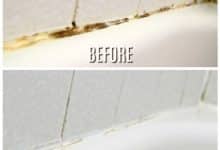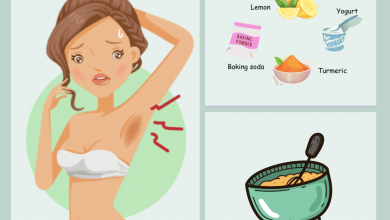Here are 7 natural cleaners that will effectively help clean stains and remove odor from clothes and keep your laundry routine green.
1. Baking Soda

That same box of baking soda that you have in your kitchen cabinet is one of nature’s best gifts to laundry, and very inexpensive to boot. It is a perfect green odor reducer to keep your laundry smelling fresh and is safe to use on all fabrics, including children’s sleepwear.
Baking soda also aids in boosting detergent performance, softening fabrics, and reducing suds for quicker loads in front load washers.
2. Lemon or Lime Juice

Fresh or bottled 100 percent real lemon or lime juice has a natural bleaching action on fabrics due to the acetic acid.
If you spill some on colored clothing, you’ll want to remove the juice before it causes permanent discoloration. However, you can use either type of juice on white fabrics to help remove yellow underarm stains or rust stains.
3. Distilled White Vinegar

Distilled white vinegar is a miracle worker in the laundry room. It is inexpensive, gentle on fabrics, and safer to use than chlorine bleach and fabric softeners. Always choose white vinegar over apple cider or other types because it will not stain fabrics (and it’s cheaper!).
White vinegar is key to removing yellow underarm perspiration stains and odor, removing mildew stains, whitening and brightening your clothes. Just adding one cup of distilled white vinegar to the final rinse will leave clothes feeling soft and smelling fresh.
You can even use vinegar to clean your washer and help control musty washer odors.
4. Hydrogen Peroxide

Head to the medicine cabinet for hydrogen peroxide as a good alternative to the much harsher chlorine bleach when you need to whiten clothes. Hydrogen peroxide (H2O2) is an oxidizing agent that can be used as a bleach. The 3% solution sold in drug stores as a first-aid disinfectant is the best choice for the laundry as well. Hydrogen peroxide breaks down into water and oxygen and is a more environmentally safe alternative to chlorine bleach.1
Hydrogen peroxide works well in removing underarm yellowing and the dye from nail polish, curry, and red wine stains.
5. Borax

You may think borax comes from a chemical lab because most of us associate it with the 20 Mule Team brand. But, borax is a naturally occurring mineral composed of sodium, boron, oxygen, and water. Borax has no toxic fumes and is safe for the environment. It can irritate skin and should not be ingested.2
Borax boosts the performance of any type of detergent in cleaning clothes and removing stains (especially on cloth diapers), softens hard water, and helps control odor. Almost all homemade laundry detergent recipes contain borax.
6. Talc, Cornstarch or Chalk

Talcum powder, baby powder, kitchen cornstarch, or plain white chalk are wonderful natural treatments for helping to absorb oily stains. If you catch the oil or grease drip on the fabric promptly, they can even remove it!
Simply sprinkle the oily stain liberally with baby powder, talcum powder, or cornstarch; you can also rub the area with white chalk. Allow it to sit on the stain for at least ten minutes to absorb the oil; then simply brush away. Later, wash or dry clean the garment following care label directions.
7. Table Salt

There are old wives’ tales about using salt to set the dye and stop the dye bleeding of fabrics. Unfortunately, salt won’t work that way on today’s fabrics and dyes. But plain, simple table salt works in the laundry as a mild abrasive element for stain removal of rust and red wine stains and to absorb liquid stains before they set.
If you have a red wine spill, sprinkle it liberally with table salt. Use the cheapest salt you can find. Let it absorb the liquid and then brush away before you wash the item. Remember, if you don’t wash it out, salt can leave white stains on your fabric.
If you have stains or residue on the bottom of your iron, salt works well as a gentle abrasive. Simply dampen a handful of salt very slightly and scrub the faceplate of the iron. When the iron is clean, wipe it with a clean damp cloth. You’re ready to iron.







